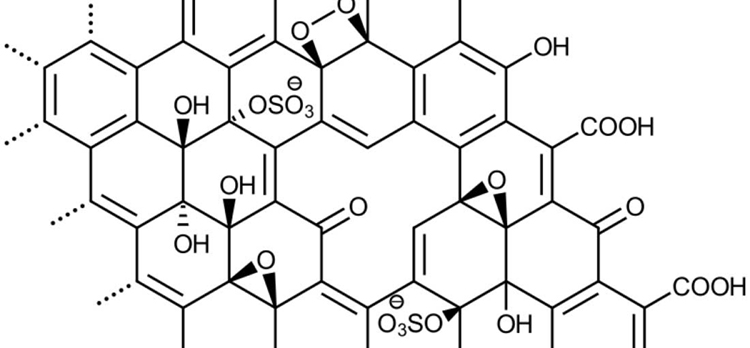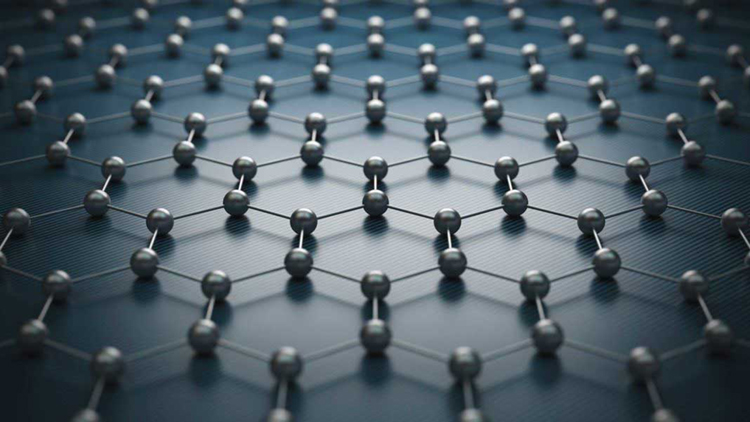Graphene is atwo-dimensional carbon nano-material consisting of hexagonal honeycomb latticecomposed of carbon atoms and SP hybridized orbits.
Graphene has excellent optical,electrical and mechanical properties. It has important application prospects in materials science, micro-nano processing, energy, biomedicine and drug delivery, and is considered to be a revolutionary material in the future.In the field of RFID tags, it is a powerful label material.

Slurry preparation, preparation and dispersion control ofgraphene conductive slurry
Becausegraphene has different appearance and conductivity from conductive silverpowder, the formulation and process of conductive slurry based on graphene arealso quite different. The hydrophobicity of graphene makes it very easy forgraphene nanosheets to agglomerate through strong van der Waals force. Using effectivesolvents can prevent the agglomeration of graphene, thus making it a stablegraphene dispersion. The ideal solvents are N-methyl pyrrolidone (NMP) anddimethylformamide (DMF). In this project, DMF/NMP is used as solvent todisperse graphene by adding stabilizer (e.g. ethyl cellulose) in theformulation of graphene slurry, in order to solve the problem that graphenepowder is easy to agglomerate and not easy to disperse. The particle size anddispersion of graphene slurry were measured by laser particle size analyzer toensure the dispersion of graphene slurry particles.
By adding ultraviolet initiator, photosensitive resin and othercomponents into graphene conductive paste, the mixing ratio is optimized sothat graphene conductive paste can be cured rapidly under ultraviolet light,the drying temperature of printed RFID electronic tags is reduced, drying timeis shortened, and production efficiency is improved. It can print RFIDelectronic tags on various substrates such as paper, plastic film and silkfabrics. The printing adaptability of graphene conductive paste, such asviscosity, viscosity, fluidity, surface tension, dryness, thixotropy, rheologyand granularity, was adjusted by changing the binder and additives of paste.The requirements of gravure printing were met by using viscometer or Ubbelohdeviscometer, paste viscometer and surface tension.

Design of RFID tag antenna based on graphene conductive pasteprinting
Themain parameters affecting the electrical performance of RFID tags antenna areantenna shape, size and structure, material characteristics, working frequency,frequency bandwidth, polarization direction, directivity, gain, lobe width,impedance, sensitivity, quality factors and application environment. The designof RFID tag needs to weigh these parameters.
In the simulation software HFSS or ADS, the design parameters such asantenna linewidth, line spacing, bending size, feed gap, feed ring size,electromagnetic signal reception, conductivity of feedback material, dielectricpermittivity and so on are input to carry out computer simulation. As shown inFig. 9, the echo loss and energy distribution of UHF RFID tag are obtained bycomputer simulation, so as to determine RFID electronic tag. Characterizationparameters of tag electrical performance and data model were established. Theeffects of the formulation of graphene conductive paste and the processingparameters on the performance of the antenna were studied. The effects of inkfilm thickness on skin effect and antenna performance are studied. Theimpedance characteristics of graphene ink layer at different chemicalpotentials, especially the effect of high reactance characteristics in UHF bandon the gain of RFID tag antenna were studied.
Control of Gravure PrintingParameters Based on Graphene Conductive Paste
According to the printingsuitability of graphene conductive paste and the structure parameters of RFIDtag designed by computer simulation, the appropriate number of screen lines,the depth of mesh hole and the shape of mesh hole of gravure printing drum aredetermined, the ink amount is calculated, and the thickness of slurry film isadjusted. Aiming at different substrates such as paper, plastic film (such asPET, PI, CPP) and silk fabrics, a series of printing process parameters such aswinding tension during gravure printing, pressure of press roll, thixotropicviscosity of paste, contact angle of scraper, printing speed and positioningoverprint were adjusted to obtain the optimal printing process plan.

Optimizing the Drying Temperature of Ink Film and Pressure of Roller
Because the printing conductive ink layer can be dried and curedto a certain extent and then calendered by drum, the surface morphology can bechanged, the density of the ink layer can be increased, and the conductivitycan be greatly improved. However, the grinded ink film can easily lead toenlargement of the outline and distortion of the conductor. Adjust thetemperature and time of graphene conductive ink layer in UV curing channel,test the ability of conductivity improvement and the degree of ink contourdeformation, and optimize the process parameters such as curing temperature,time and pressing pressure of graphene conductive ink layer.
Analyzing and Testing the Performance of RFID Electronic Tags
After the printed samplesheet is attached to the chip, the electrical performance parameters such asworking frequency, frequency bandwidth, polarization direction, directivity,gain, lobe width, impedance, quality factor bandwidth, directivity, gain, echoloss, quality factor and sensitivity are tested on the network analyzer such asTagformance. The reading distance of the sample sheet in different applicationenvironments is tested and verified and corrected.